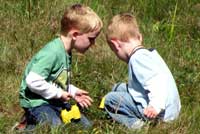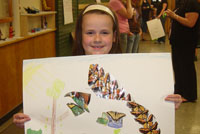DACF Home → Bureaus → Division of Animal and Plant Health → Integrated Pest Management → Teaching IPM in the Classroom → What is IPM?
 Teaching Integrated Pest Management in the Classroom
Teaching Integrated Pest Management in the Classroom
Integrated Pest Management - A responsible way to manage pests in the environment
What is IPM? In a nutshell:
- Integrated pest management is a holistic approach to managing pest problems.
- IPM is used in the home, garden and workplace.
- Pests can include insects, weeds, animals and microbes that are unwanted in a specific setting.
Specifically:
- IPM uses scientific knowledge about pest life cycle coupled with an understanding of the environment to generate sustainable plans to minimize pest problems.
- Multiple techniques are used together to identify, monitor, and curb pest damage to tolerable levels.
- Emphasis is placed on using cultural, biological and physical methods, while trying to minimize the use of chemical controls, such as pesticides.
- IPM's overall focus is to manage pest problems in a environmentally responsible way that reduces risks to people, property and to the environment.
Why Should Teachers Teach IPM?
- Easy to Use: Many lessons are fully outlined with complete lists of materials to use and timelines needed to prepare and present material. Most of the lessons also have supplementary materials available to print out and use.
- Lessons are Relevant: Concepts of IPM are used in everyday life; IPM encompasses many common topics that a child faces daily:
- Why are ticks dangerous?
- What are the benefits of organic vs. conventionally grown food?
- Why should we wash our fruit?
- How did DDT sprayed on crops hurt eagles in the 60's?
- Why are bees important?
- Fun, Engaging and Exciting!
Games, activities and projects! All lessons work hard to engage students in the topic. Take advantage of the new ideas and share them with your students to have fun in the classroom.
- Watch a movie! Introducing teachers to the school IPM curriculum project and why they should teach IPM in their classrooms!
- Check out the presentation (PPT) we put together on teaching IPM and how it connects to sustainable agriculture for the 2011 Maine Environmental Education Association Conference!


[Photos, left to right: (children in grass) photographer unknown; (girl with poster) Kathy Murray and Patty Armstrong]